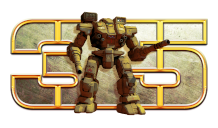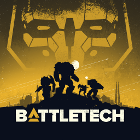- Home
- New To BattleTech?
- MUL
- Forums
- News
- Books
- Shrapnel
- Universe
- Downloads
- Characters
- Community
- Errata
- Links
- Gallery
IO Development: Base Stats
On March 30, 2012
I believe I’ve mentioned this before, but we’ve had an internal “IO Base Stats & Scales” document that’s been kicked for literally years at this point. It’s evolved massively over that time, with already a dozen different paths trod, discarded and backtracked. And I don’t doubt before we’re done we’ll discard another dozen different concepts as we continue to hammer on this.
If I’ve tread on this ground before, I apologize…but since I’m neck deep in it now, thought I’d share the love.
This base document makes some core assumptions. The assumptions being that regardless of scale, there are core aesthetics that make BattleTech…well…”BattleTech” And as such, despite those scales and what ever modifications you need to make the rules work correctly, these core elements must be apart of game play at every scale.
Additionally, beyond the importance of making sure every scale (regardless of how large and/or abstract) feels like BattleTech, it’s also critical to have all scales mesh in a way that allows for the translation of all data between scales (something previous attempts at this generally failed at). Hence, as I said above, plenty of game mechanics have been suggested and discarded because they didn’t fit those two criteria over-laying everything.
In no particular order:
- Experience Rating
- Range
- Damage Rating
- Defensive Rating
- Damage Absorption
- Combat Morale/Fatigue (In Game Play)
- Combat Morale/Fatigue (Outside of Game Play)
“Hey, wait a minute,” you might be saying. “Those last two aren’t in Total Warfare, so why are they considred core?” And you’re right…while there are TW-scale rules for Morale/Fatigue (found in Tactical Operations and Strategic Operations), they’re not in the standard rules. However, as soon as you push into BattleForce-scale and then especially as you move into the last three scales, those elements are crucial to how forces react across the time and distances involved in those larger scales.
Now, you’re likely asking yourself another question. “Um, Range? Really? At Planetary Assault-scale a hex is 250 kilometers across and you still want to work in range?!”
Again, it comes back to playing endless varieties of games, talking with a lot of players and the gut check of “what makes this game feel like this game?” And at the end of that, range is crucial. So while the rules are abstracted obviously, they still take range into account, but in the core stats of a given force, but also in how an attack is made.
Next week I’ll actually provide some examples for game mechanics we’re currently looking at for how we’re trying to address that disparity.
See ya next time.
Randall







